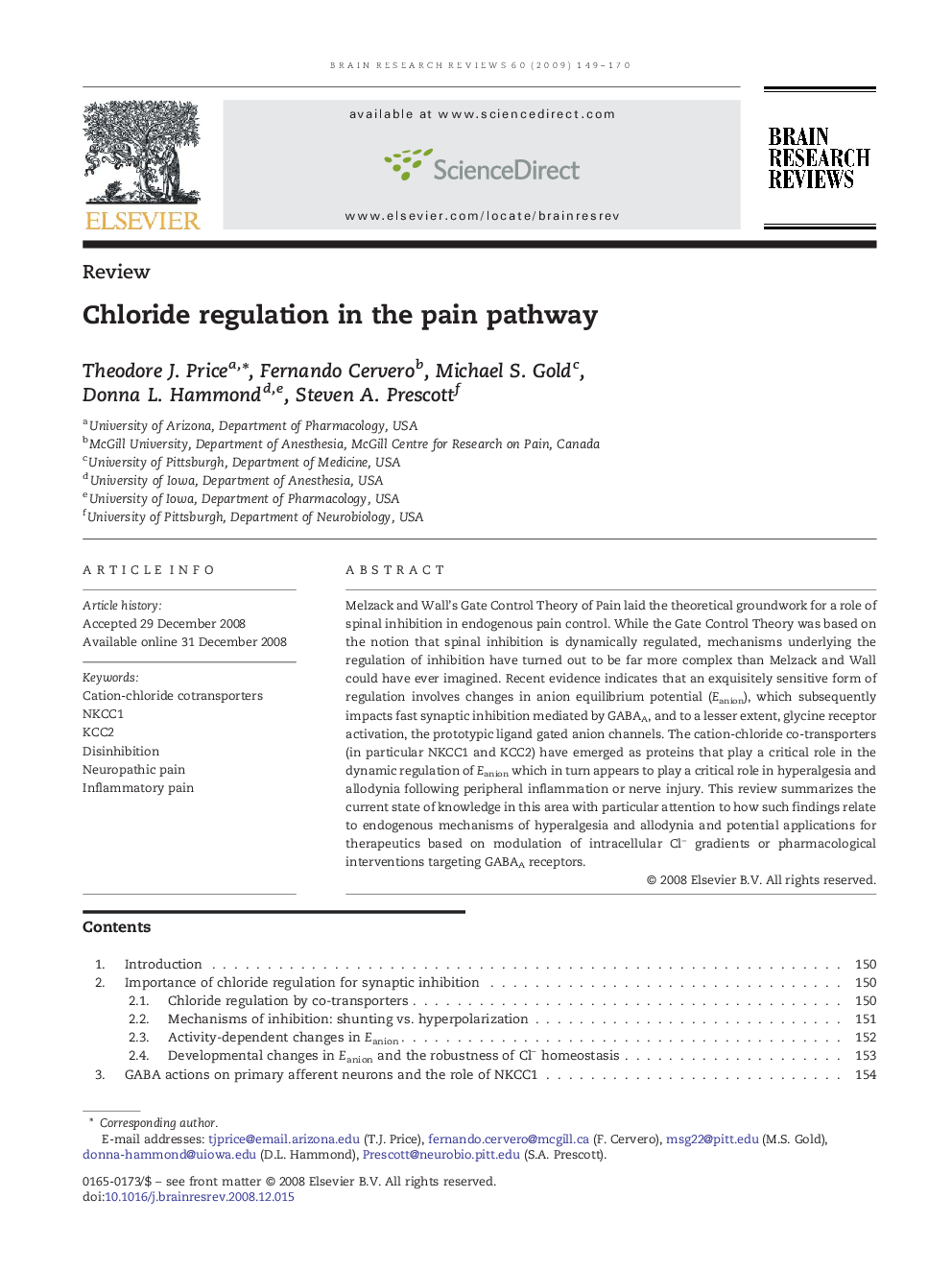| Article ID | Journal | Published Year | Pages | File Type |
|---|---|---|---|---|
| 4333813 | Brain Research Reviews | 2009 | 22 Pages |
Melzack and Wall's Gate Control Theory of Pain laid the theoretical groundwork for a role of spinal inhibition in endogenous pain control. While the Gate Control Theory was based on the notion that spinal inhibition is dynamically regulated, mechanisms underlying the regulation of inhibition have turned out to be far more complex than Melzack and Wall could have ever imagined. Recent evidence indicates that an exquisitely sensitive form of regulation involves changes in anion equilibrium potential (Eanion), which subsequently impacts fast synaptic inhibition mediated by GABAA, and to a lesser extent, glycine receptor activation, the prototypic ligand gated anion channels. The cation-chloride co-transporters (in particular NKCC1 and KCC2) have emerged as proteins that play a critical role in the dynamic regulation of Eanion which in turn appears to play a critical role in hyperalgesia and allodynia following peripheral inflammation or nerve injury. This review summarizes the current state of knowledge in this area with particular attention to how such findings relate to endogenous mechanisms of hyperalgesia and allodynia and potential applications for therapeutics based on modulation of intracellular Cl− gradients or pharmacological interventions targeting GABAA receptors.
